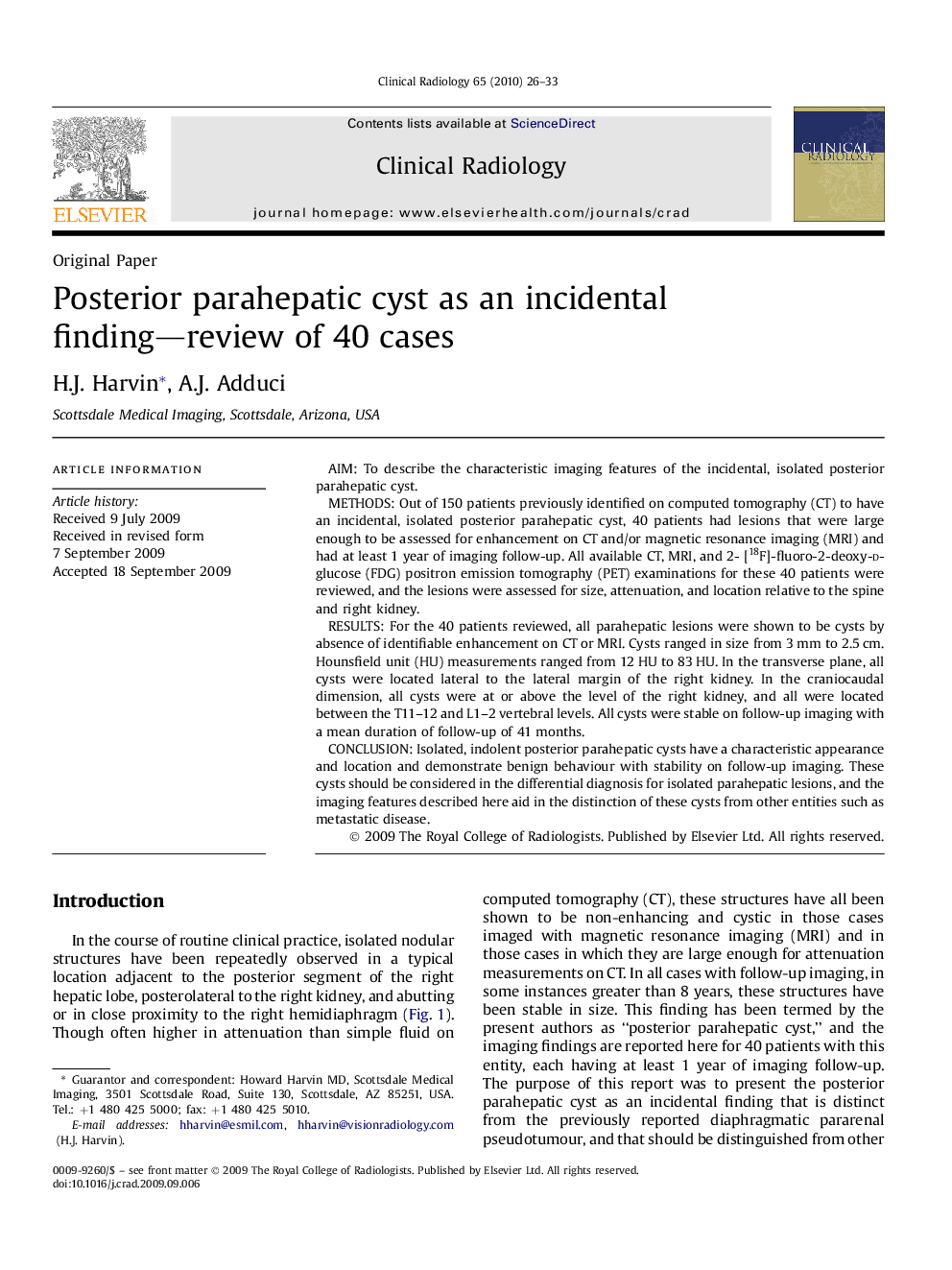| Article ID | Journal | Published Year | Pages | File Type |
|---|---|---|---|---|
| 3983856 | Clinical Radiology | 2010 | 8 Pages |
AimTo describe the characteristic imaging features of the incidental, isolated posterior parahepatic cyst.MethodsOut of 150 patients previously identified on computed tomography (CT) to have an incidental, isolated posterior parahepatic cyst, 40 patients had lesions that were large enough to be assessed for enhancement on CT and/or magnetic resonance imaging (MRI) and had at least 1 year of imaging follow-up. All available CT, MRI, and 2- [18F]-fluoro-2-deoxy-d-glucose (FDG) positron emission tomography (PET) examinations for these 40 patients were reviewed, and the lesions were assessed for size, attenuation, and location relative to the spine and right kidney.ResultsFor the 40 patients reviewed, all parahepatic lesions were shown to be cysts by absence of identifiable enhancement on CT or MRI. Cysts ranged in size from 3 mm to 2.5 cm. Hounsfield unit (HU) measurements ranged from 12 HU to 83 HU. In the transverse plane, all cysts were located lateral to the lateral margin of the right kidney. In the craniocaudal dimension, all cysts were at or above the level of the right kidney, and all were located between the T11–12 and L1–2 vertebral levels. All cysts were stable on follow-up imaging with a mean duration of follow-up of 41 months.ConclusionIsolated, indolent posterior parahepatic cysts have a characteristic appearance and location and demonstrate benign behaviour with stability on follow-up imaging. These cysts should be considered in the differential diagnosis for isolated parahepatic lesions, and the imaging features described here aid in the distinction of these cysts from other entities such as metastatic disease.
